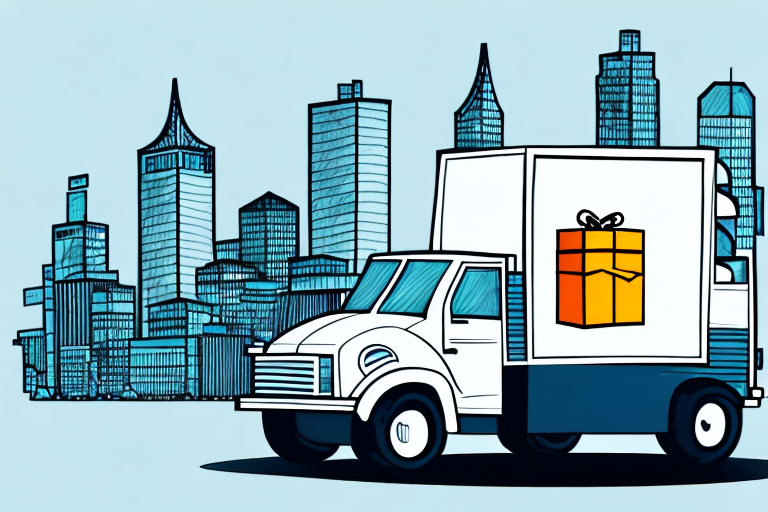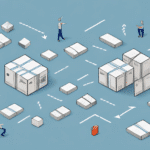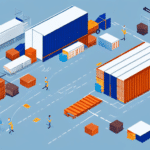What is Drop Delivery?
Drop delivery, often referred to as drop shipping, is a supply chain management model where businesses collaborate with third-party logistics providers to fulfill customer orders. Instead of purchasing and storing inventory, businesses source products directly from suppliers, who then ship the products straight to the customers. The logistics provider manages all aspects of the fulfillment process, including inventory management, packaging, shipping, and handling returns.
This model has surged in popularity, particularly with the rise of e-commerce. According to Statista, the global drop shipping market is projected to reach over $557 billion by 2025, driven by the increasing demand for flexible and scalable business models.
Advantages of Drop Delivery for Small Businesses
Cost Savings
One of the primary benefits of drop delivery is the significant cost savings it offers. By eliminating the need to purchase and store inventory upfront, businesses can reduce warehousing costs and minimize the risk of overstocking or stockouts. Additionally, partnering with a logistics provider often allows businesses to take advantage of bulk shipping rates, further lowering expenses.
Flexibility and Scalability
Drop delivery provides businesses with the flexibility to expand their product offerings without the constraints of physical inventory. This scalability enables small businesses to test new products in the market with minimal risk, allowing for rapid adaptation to changing consumer demands.
Enhanced Focus on Core Business
By outsourcing the logistics and fulfillment processes, businesses can concentrate on their core competencies, such as marketing, product development, and customer service. This strategic focus can lead to improved business performance and growth.
Cost Savings with Drop Delivery
Implementing a drop delivery model can lead to substantial savings in both inventory and shipping costs. Without the need to maintain a physical inventory, businesses can avoid high upfront investments and ongoing storage fees. According to a report by Business.com, businesses can reduce their operational costs by up to 30% through drop shipping.
Moreover, logistics providers often negotiate better shipping rates due to their volume, which can translate to lower shipping costs for businesses. This cost efficiency is particularly beneficial for small businesses looking to maintain competitive pricing while maximizing profit margins.
Implementing a Successful Drop Delivery Strategy
Choose a Reliable Logistics Provider
The success of a drop delivery strategy heavily depends on the reliability of the logistics provider. It's crucial to select a partner with a proven track record of timely and accurate order fulfillment. Look for providers that offer real-time tracking, efficient customer support, and have positive reviews from other businesses.
Select Quality Suppliers
Working with reputable suppliers ensures that the products meet quality standards and are delivered on time. Establish strong relationships with suppliers and regularly audit their performance to maintain high standards.
Invest in Automation Tools
Automation can streamline various aspects of the drop delivery process, including inventory management, order processing, and customer communications. Tools like Shopify and WooCommerce offer integrations that can enhance efficiency and reduce the likelihood of errors.
Maintain Clear Communication
Effective communication with both suppliers and logistics providers is essential. Implementing regular updates and transparent communication channels can help address issues promptly and ensure a smooth fulfillment process.
Risks and Mitigation in Drop Delivery
Quality Control Issues
Since businesses do not handle the products directly, there's a risk of receiving defective or damaged goods. To mitigate this, establish strict quality control standards with your suppliers and conduct regular inspections.
Inventory Management Challenges
Managing inventory levels can be complicated when dealing with multiple suppliers. Implementing advanced inventory management systems that integrate with your logistics provider can help maintain accurate stock levels and prevent discrepancies.
Customer Satisfaction Concerns
Delayed or incorrect shipments can negatively impact customer satisfaction. Partnering with reliable logistics providers and maintaining open lines of communication can help ensure timely deliveries and address any customer concerns promptly.
Industries Benefiting from Drop Delivery
- Retail: Retail businesses can expand their product lines without the need for extensive storage facilities, allowing for a more diverse inventory.
- E-commerce: Online stores benefit significantly from drop delivery by reducing overhead costs and offering a broader range of products to customers.
- B2B: Business-to-business companies can streamline their supply chains and improve order fulfillment efficiency through drop delivery models.
- Food and Beverage: Companies in this sector can offer a wide variety of products without the constraints of a physical storefront, reaching a larger audience.
- Healthcare: Medical suppliers can ensure timely delivery of essential supplies to hospitals and clinics, enhancing patient care and operational efficiency.
Future Trends in Drop Delivery
Increased Automation and AI Integration
The drop delivery industry is expected to see greater integration of automation and artificial intelligence. These technologies can enhance order processing, inventory management, and predictive analytics, leading to more efficient operations.
Expansion into Emerging Markets
As global e-commerce continues to grow, drop delivery services are likely to expand into emerging markets, providing businesses with access to new customer bases and opportunities for international growth.
Enhanced Sustainability Practices
There is a growing emphasis on sustainable practices within the drop delivery model. Companies are adopting eco-friendly packaging, optimizing delivery routes to reduce carbon emissions, and partnering with green logistics providers to minimize their environmental impact.
Integration with Advanced Technologies
Technologies such as drones and autonomous vehicles are set to revolutionize the drop delivery landscape. These advancements promise faster and more cost-effective delivery solutions, further enhancing the efficiency of drop shipping operations.
Conclusion
Drop delivery offers a compelling business model for small businesses seeking to reduce costs, increase flexibility, and scale operations efficiently. By understanding its advantages, implementing a strategic approach, and mitigating associated risks, businesses can leverage drop delivery to achieve sustainable growth. Staying informed about future trends and continuously optimizing the drop delivery process will ensure that businesses remain competitive in an evolving market landscape.




















